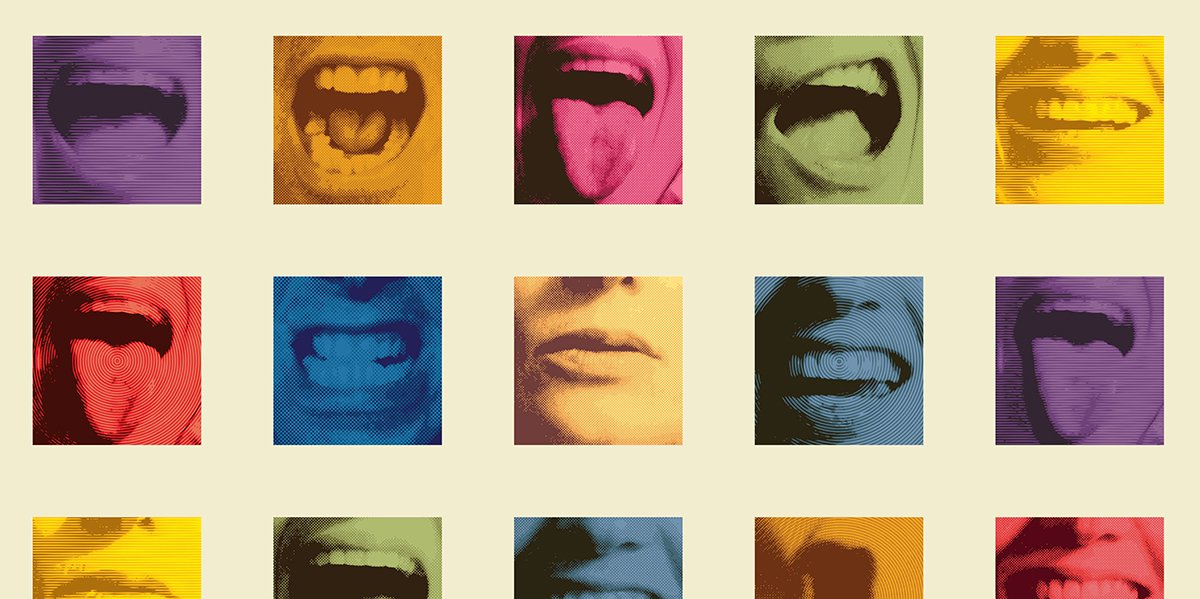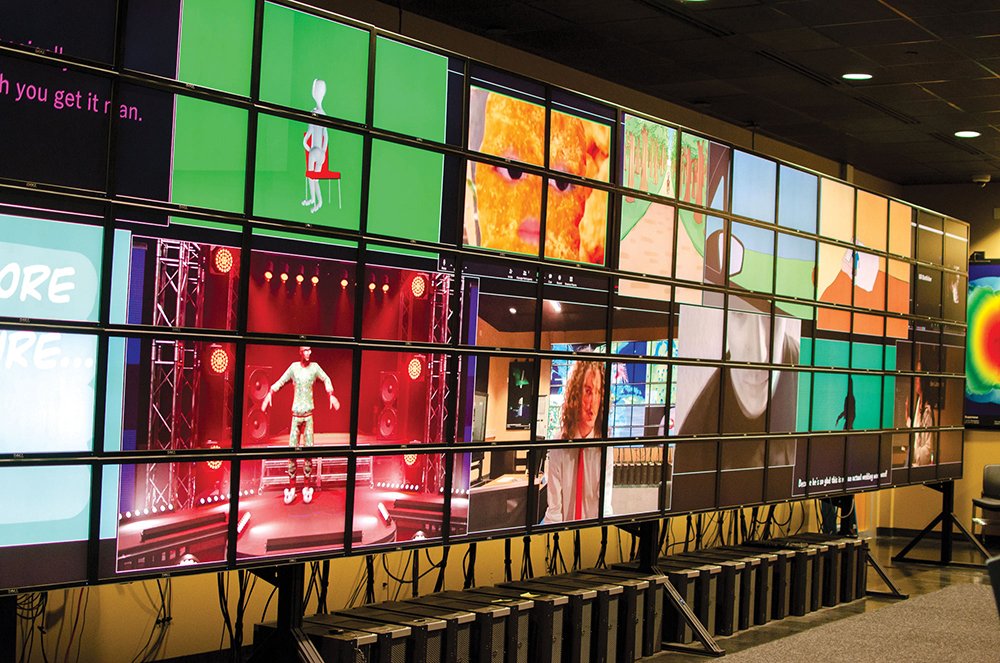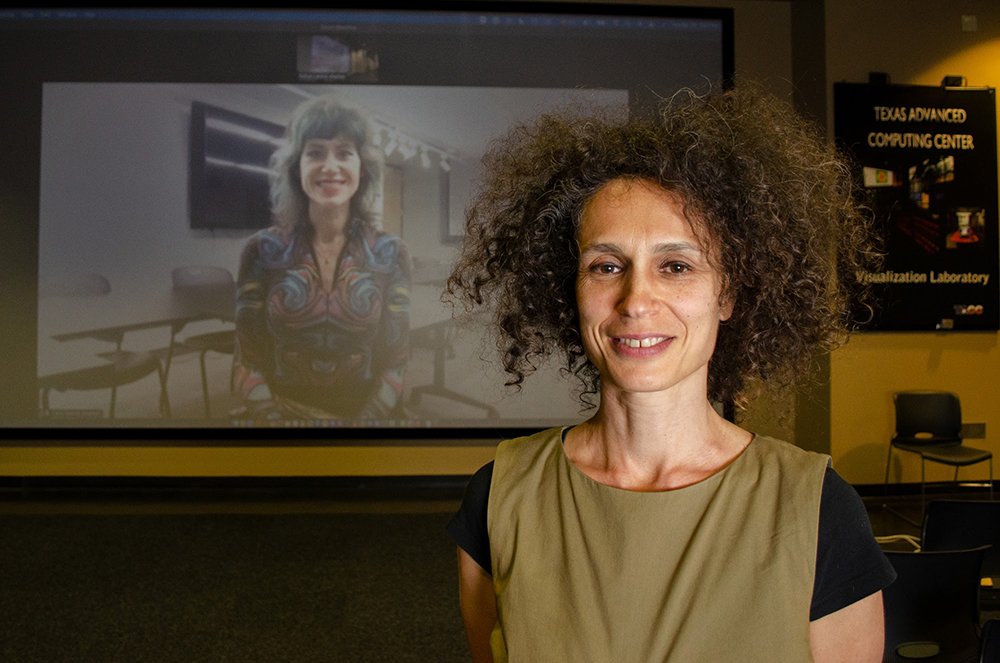Feature Stories
Faith Singer
Laugh Out Loud
Professors from UT Austin and NYU explore how to be funny using TACC’s Vislab as a backdrop

At a time when humanity struggles with a global pandemic and faces so many other crises two distant professors — one in Texas and one in New York — decided to offer a college course on humor and absurdity.
“Perhaps the most crucial element of comedy is a sense of relief,” said Carla Gannis of New York University.
Gannis met artist Yuliya Lanina of UT Austin in Brooklyn more than 15 years ago and an instant bond was formed. Since then, the two women individually worked on several events and exhibitions spanning the globe. In 2018, they both participated on a panel at SXSW Interactive called “Humor Makes Us Better Storytellers.” It was an opportunity for each of them to find ways that their work could cross-pollinate.
"Humor can be the agent that humanizes our technology-driven culture."
Then, the COVID-19 pandemic made teaching in online spaces much more common. The pair conceived of a way to virtually bring together their classrooms and teach simultaneously from distant parts of the country.
“Humor in Storytelling” emerged as a first-of-its-kind class co-taught by Lanina and Gannis in person and via Zoom in Spring 2022.
“This class emerged from many different intersections and exchanges over the years,” Lanina said. “It’s designed to gauge students critically in exploiting humor and absurdity in the production of their works.”
The only prerequisite for the 34 students who participated was tapping into their individual sense of humor. They addressed pressing societal issues, their autobiographies, and the art of puns in the form of TikTok performance videos, mock Zoom interfaces, game-generated experiences, and live performances.

“Yuliya and I both believe that humor can be the agent that humanizes our technology-driven culture and can help assuage our anxiety during moments of adversity in society,” Gannis said. “Humor is needed for survival.”
Both women have extensive backgrounds working with the same foundational premise — looking at humor and absurdity when faced with trauma and distress — in places that are not usually funny.
Lanina’s work is an eclectic combination of performance, animatronic sculptures, public art, and animation. “I try not to limit students into the form of expression they will take…I let them decide for themselves, but introduce them to a variety of possibilities,” she said.
Gannis’s approach begins with themes and storytelling and then explores a range of emerging technologies, particularly avatars, motion capture, and metaverse spaces. “That’s been the trajectory of my work for the past 10 years…it’s concentric, like a Russian doll.”

“To be surrounded by multimedia screens is inspirational,” Lanina said. “Having the Vislab was essential to the entire experience.”
When asked what the primary objectives of the class were, Lanina and Gannis responded that teaching students how to take a critical approach to comedy was key. “Comedy is subjective, personal, and can be easily misinterpreted. We encourage students to dig into their own backgrounds instead of co-opting from other people,” Gannis said.
What would it be like if a machine could make us laugh?
The answer might be Lucille Trackball, an artificial intelligence (AI) stand-up comedian that Gannis created to explore the idea of emerging technologies. The digital comedian was inspired by the portraits of the 16th century mannerist painter Giuseppe Arcimboldo and the American comedian Lucille Ball.
This concept of AI and culture has led Gannis to lecture across the world about the field of ‘computational humor,' a new area of study that emerged in 1996 when the first dedicated conference to the subject took place in the Netherlands.
The new class utilized TACC’s Visualization Lab (Vislab) on UT Austin’s main campus as a home base. TACC Vislab Manager Greg Foss worked closely with Lanina to turn the lab into a multimedia collaboration and presentation space for the students.
Also of primary importance was teaching the use of technology and tools such as motion graphics, video production, gaming, and social media platforms. “It was fun to see the many different experiences turn into a broad range of projects,” Lanina said.

Lanina grew up in Russia and Ukraine, and said she was grateful that she and Gannis chose this topic for the class.
"With the war in Ukraine, I really needed to process what’s going on and the way I do it is through making art. The recent focus of my work has been on intergenerational trauma as a result of war. Without elements of humor, I find it impossible to delve into this topic.”
Co-teaching from two universities and two time zones with both undergraduate and graduate students was a learning experience for both women.
“You can make it work,” Gannis said. “We both had so much enthusiasm for the material. It was an amazing learning experience for me as an educator. It was also quite interesting giving students from NYU exposure to students from small towns in Texas and vice versa.”
Lanina asserted that the class uncovered lessons that apply to just about anyone: “Humor helps us have an additional perspective and connect to humanity.”

